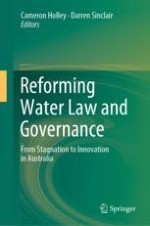2018 | OriginalPaper | Chapter
Regulatory and Economic Instruments: A Useful Partnership to Achieve Collective Objectives?
Authors : Adam Loch, C Dionisio Perez-Blanco, Dolores Rey, Erin O’Donnell, David Adamson
Published in: Reforming Water Law and Governance
Publisher: Springer Singapore
Activate our intelligent search to find suitable subject content or patents.
Select sections of text to find matching patents with Artificial Intelligence. powered by
Select sections of text to find additional relevant content using AI-assisted search. powered by
